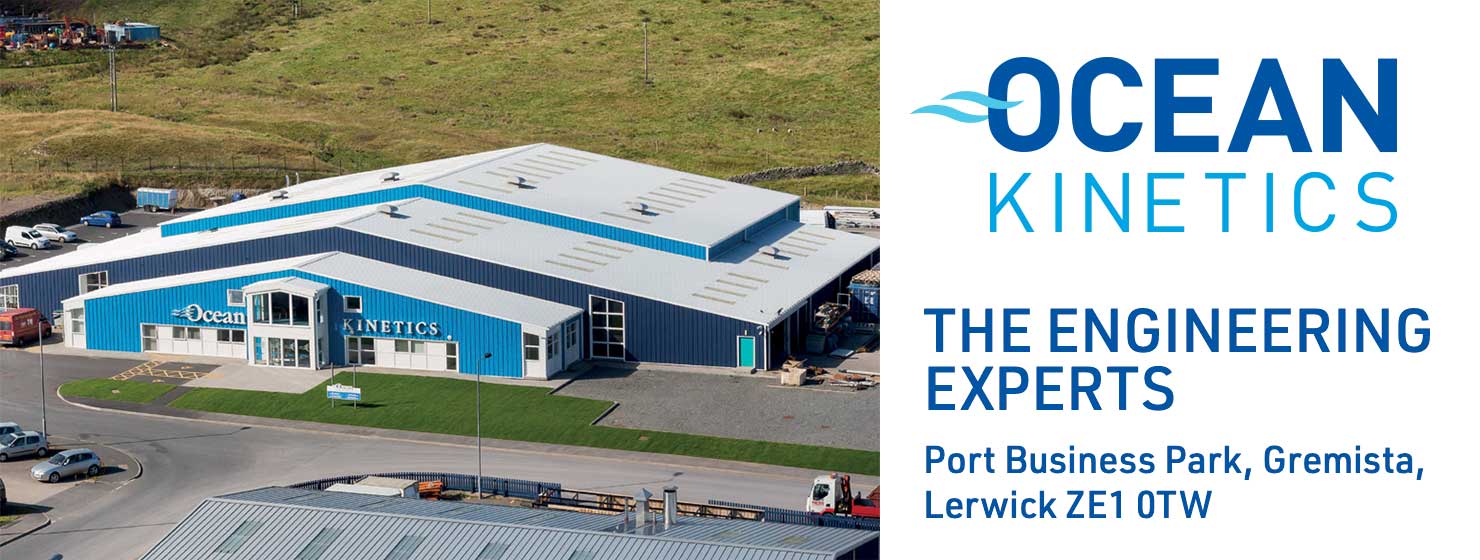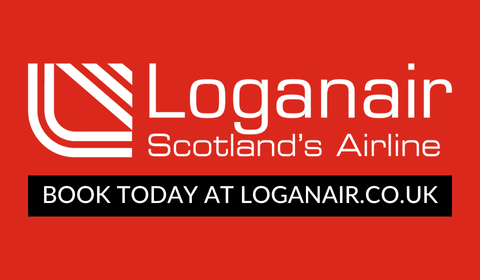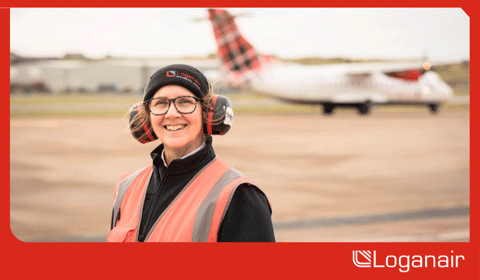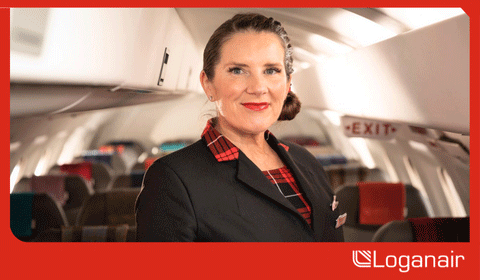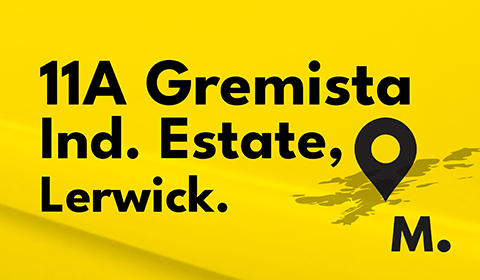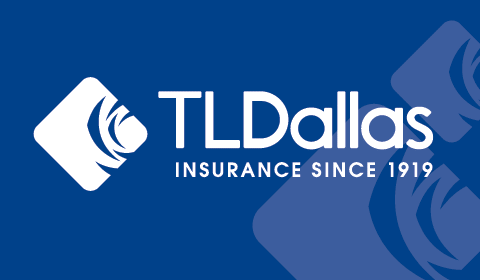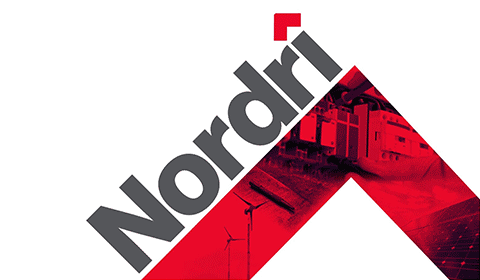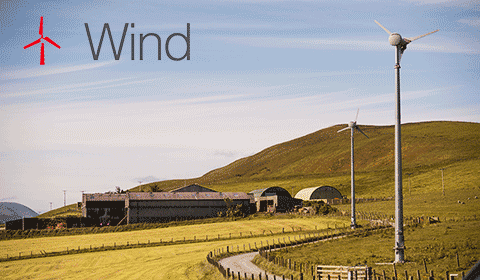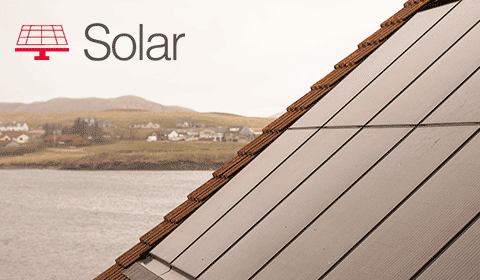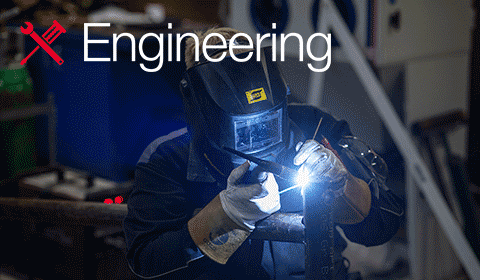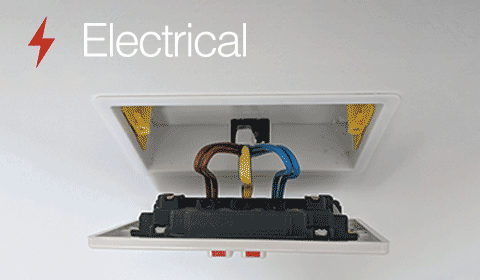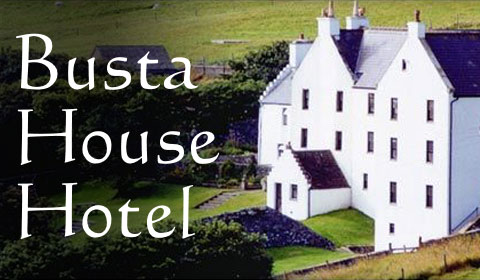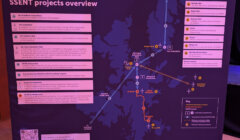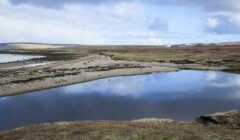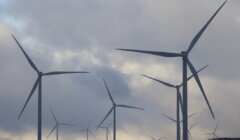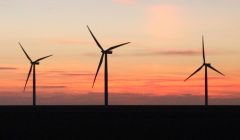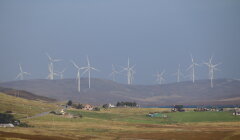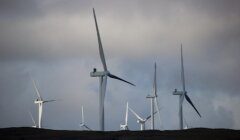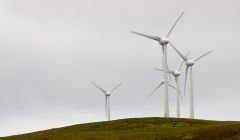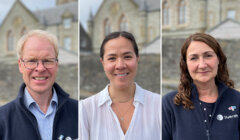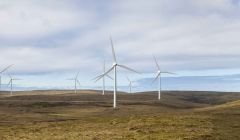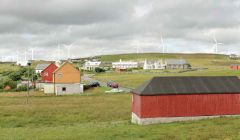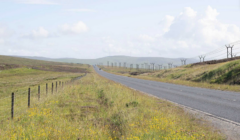Letters / Who speaks for Yell?
Introduction
The Yell Community Council (YCC) has moved toward investing in Statkraft’s wind farm developments on Yell—a decision that raises serious concerns about transparency, representation, and public accountability. Despite previously insisting it could not take an official stance on the wind farm proposals due to conflicts of interest, YCC—through its vice-chair—has now, by invitation, convened a group called the “Community Representative Volunteers” (self-described as the steering group) to explore a buy-in (their first meeting took place on 26/09/2024).
This move, made without consulting the wider community, effectively signals tacit endorsement of the very development YCC previously claimed it could not support due to conflicts of interest. Curiously, Fetlar Community Council has also been invited to participate—despite the fact that the windfarms in question are to be built in Yell.
Transparency Concerns and Non-Disclosure Agreements (NDAs)
The meeting minutes from 20th November 2024 confirm that the subgroup of “Community Representative Volunteers” has been formed to explore shared ownership, with unanimous agreement to pursue a Memorandum of Understanding (MOU) with Statkraft. It was also noted that Statkraft may require a non-disclosure agreement (NDA) in relation to a buy-in before negotiations can begin properly — raising further serious concerns about transparency and whether they will be able to keep the community fully informed or explore other options.
The inability of YCC to take a formal stance, citing conflicts of interest due to personal financial stakes in the developments, does not legally prevent them from informing the community about the projects—both the potential benefits and risks. Yet, they have consistently failed to do so. Discussions of the windfarms are limited to short entries in a few sets of YCC minutes.
Now, without public consultation, YCC has moved forward with talks to buy into the development—effectively endorsing the wind farm project. A potential NDA would not only restrict YCC and its steering group from updating the community, but could also prevent them from considering alternative options. If imposed, this would render YCC and the steering group, both in practice and principle, incapable of functioning as a proper community council or legitimate community representatives.
These discussions should not be driven by what Statkraft wants, but by what is in the best interests of the community.
In my communications with YCC about these concerns I have been told that discussions are at a very early stage and that once there are options available, a public meeting will be held to allow discussion on what may be the best way forward. Any attempt YCC or the steering group make at offering a limited set of predetermined options while claiming the community has a democratic choice over how it is represented, is misleading. Instead, it reflects an autocratic approach that values expediency over inclusivity, as no one outside the group has been consulted, and only a few are even aware of what is taking place.
While I recognise that some of those selected for the Community Representative Volunteers (steering group) have a history of contributing their time to community initiatives, prior involvement alone does not guarantee they represent the interests of the community in this case, especially since a number of members have financial interests in the windfarms. A simple series of island-wide hall visits just to explain what was on the table and offering the opportunity to make representations and get involved is all that was needed.
In any case, what motive does Statkraft have for offering a buy-in to Yell Community Council? It is reasonable to assume that Statkraft is not offering a controlling share—so what rights, if any, would come with this investment? For example, would Yell Community Council or the steering group gain the ability to attend shareholder meetings, or would their role remain purely symbolic?
The CARES Scheme and YCC
CARES (Community and Renewable Energy Scheme) provides financial support to communities investing in renewable energy projects. In YCC’s case, the use of CARES funds is concerning. Taxpayers’ money should only be committed with full transparency and consensus, not by a small convened group in which several members have vested interests in the windfarms or developments with which they are functionally interdependent. The meeting notes indicate that early-stage grants can be allocated for legal and financial advice—steps that should necessitate thorough community consultation. Proceeding without proper community input risks eroding trust and making decisions that fail to reflect the community’s broader interests.
It is also worth considering whether CARES, as a Scottish Government scheme funded by public money, may act as a mechanism to encourage community councils to endorse developments they might otherwise question. By offering financial support for legal and financial advice, the scheme creates a framework that aligns local interests with national renewable energy goals. However, this alignment risks prioritising government policy objectives over genuine community sentiment, particularly in light of the divisive nature of the Statkraft developments and the profound changes they will bring to Yell.
Accepting an NDA could mean that taxpayer-funded resources—such as CARES grants—are being allocated in ways that the public cannot scrutinise. Moreover, given that Norway, through Statkraft (a fully state-owned Norwegian company[i]), does not require financial assistance, is it appropriate for CARES to be used in this context, given the involvement of the taxpayer?
Community Benefit Without Buy-In
It is important to note that Yell should be able to secure substantial financial benefits from the wind farm developments without committing to a buy-in. Based on Statkraft’s own figures and commitment to Scottish Government guidelines,[ii] the likely community benefit would amount to no less than £860,000 per year—equating to just over £900 per person annually. This includes £630,000 from the Energy Isles Wind Farm’s installed capacity of 126 MW (18 turbines) and an estimated £230,000 from the Beaw Field development based on a 72 MW capacity. However, if the recommended £5,000 per MW is applied, the Beaw Field contribution should be higher at £360,000. These figures highlight that Yell can benefit without endorsing or assuming the financial risks associated with a buy-in.
Although Statkraft is not legally required to provide community benefits, they have pledged to do so. However, Yell Community Council appears to have little confidence in this commitment, as they have said that nothing is guaranteed and are using this uncertainty to justify pursuing a memorandum of understanding with Statkraft regarding a buy-in. Nonetheless, such a buy-in – accompanied by a non-disclosure agreement that would effectively silence YCC and the steering group – could significantly limit their ability to consider alternative options.
Instead of taking on financial risks, the community could petition for:
- Increased direct benefit payments per MW produced, ensuring steady income without exposure to market fluctuations.
- Reduced electricity costs or free energy allowances for local residents, easing financial burdens and providing tangible long-term benefits.
- Enhanced environmental safeguards, holding developers accountable for restoration and pollution mitigation measures.
The potential acceptance of an NDA by YCC’s convened steering group signals a worrying lack of accountability. It potentially means the steering group and YCC are unable to explore alternative options or challenge assumptions without breaching contractual obligations.
For example, if Yell Community Council were to acquire, say, a 10% share in the wind farm, would it then be responsible for contributing 10% of the Community Benefit Fund? If so, would this effectively reduce the net financial gain for the community, undermining the justification for the buy-in? We might never know. If an NDA is signed, it could prevent communities from sharing lessons learned or warning others about potential pitfalls in dealing with companies like Statkraft.
Countering the Argument of Inevitability
One of the most common justifications for the buy-in seems to be the belief that “they are going to do it to us anyway, so we might as well benefit.” YCC has given momentum to this argument and is using it as a reason to justify their actions. However, this fatalistic attitude undermines the potential for meaningful opposition and critical negotiation. In reality, there is nothing inevitable about these developments.
There is no guarantee that the Beaw Field or Energy Isles wind farm projects will proceed as planned. Statkraft has indicated that construction of Beaw Field is now only expected to begin before the end of the decade, while the Energy Isles connection to the grid has been delayed until the end of 2028. However, these timelines still remain uncertain, and a change in policy from Statkraft’s parent company in Norway or the Norwegian Government could result in the projects being written off entirely. Such uncertainties place any buy-in investment at significant risk, potentially leading to a loss of taxpayers’ money. Planning consent does not guarantee these projects will proceed as planned, as environmental, economic, infrastructure, and logistical hurdles (such as being reliably connected to the local grid) could still threaten their viability. Large-scale developments face frequent setbacks, from supply chain disruptions for essential components to poor-quality turbine blades requiring costly replacements and cleanup. Any financial commitment is a gamble with public funds—so if this happens after YCC commits public money, what recourse would the community have?
The community must recognise its leverage in demanding greater benefits and protections, one of which is a basic human right – namely, the right to a drinking water source that is not, in any way, threatened by contamination.
The Risks of Normalising Industrialisation
Accepting a buy-in risks normalising industrialisation and weakening future resistance to similar projects. Partial local ownership does not reduce environmental harm; it merely shifts financial risk to the community while giving developers the appearance of public support. The Statkraft/Energy Isles wind farm and developments with which it is functionally interdependent presents numerous concerns. These include the potential contamination of Yell’s primary drinking water source, Gossa Water, due to the absence of a Drinking Water Protection Plan with a post-incident remediation strategy in the event of its contamination with heavy metals during construction.
The project also relies on a switching station using gas-insulated switchgear (GIS). GIS uses sulphur hexafluoride (SF₆), a greenhouse gas over 2,000 times more potent than CO₂, with leaks well-documented during construction and decommissioning. This is further aggravated by the destruction of peatland in pristine and near-natural condition – a vital carbon sink – for a project that will mitigate emissions for, at best, 40 years. Statkraft’s questionable carbon payback claims fail to consider SF₆ leaks, undermining any genuine sustainability benefits. By pursuing a buy-in with the potential requirement for an NDA, Yell Community Council and the steering group risk being seen as complicit in endorsing environmental damage and risks to the community.
Irrespective of one’s position on the windfarms, these concerns should have been recognised and raised by YCC years ago. I understand that recently, some questions have been put by YCC to SEPA and Scottish Water about this potential water contamination problem. However, Statkraft also need to be pressed on this issue.
Future Developments and Long-Term Consequences
SSE has already indicated interest in further developments in Yell—buying into two wind farm projects may make it more difficult to resist future expansion, as it will be seen as having community approval.
Relying on informal conversations, or assuming consensus, risks alienating those who oppose the project and could lead to poorly informed decisions. Suggesting that such conduct is acceptable because other community councils do it does not absolve YCC and the steering group from engaging with the community at the earliest possible stage (this stage has, alas, now passed).
A Breach of Trust
The actions of YCC in relation to the Energy Isles wind farm developments fail to uphold the principles of transparency and community representation (and risk bringing the idea of a community council into disrepute). Pursuing a Memorandum of Understanding with the possibility of an NDA being signed with Statkraft is a breach of trust (irrespective of whether it might mean cheap shares).
If YCC is truly acting in the best interests of the community, it must reject any form of NDA asked for by Statkraft and commit to full disclosure of all buy-in discussions. The residents of Yell deserve better. They deserve an open and democratic process—not secrecy and exclusion—and should not be made to feel afraid to speak up. Community relations with Statkraft should not be decided by a select few operating behind closed doors.
Community representatives—whether part of YCC, “Community Representative Volunteers”, or other groups such as North Yell Development Council (a registered charity)—exist to reflect the will of the community, not to act as independent investors or commercial entities, especially when members of these groups have personal financial interests in the windfarms or developments with which they are functionally interdependent. If YCC previously claimed it could not take a position due to conflicts of interest, how can it now justify negotiating a Memorandum of Understanding—and potentially an NDA—for a buy-in agreement with Statkraft behind what are, essentially, closed doors? The lack of publicly available information on whether NDAs have been required in past community buy-ins means that concerns must be raised now, before commitments are made. These concerns are not only justifiable; they are essential for ensuring accountability, financial clarity, and the long-term interests of the community of Yell.
Adrian Brockless
Burravoe
Yell
References
- CARES (n.d.) Funding – Local Energy Scotland. Available at: https://localenergy.scot/funding/ (Accessed: 21/01/2025).
- Yell Community Council – Sub group meeting re Shared Ownership of Windfarm Development (2024) Meeting Minutes – 20 November 2024. (Unpublished Document).
- Meeting of Community Representative Volunteers for Yell Community (DRAFT Minutes) (2024) (Unpublished Document).
- Statkraft (n.d.) Energy Isles Community Benefit. Available at: https://projects.statkraft.co.uk/energy-isles/local-benefits (Accessed: 21/01/2025).
- Statkraft (n.d.) Beaw Field Community Benefit. Available at: https://projects.statkraft.co.uk/beaw-field/local-benefits (Accessed: 21/05/2025).
- Statkraft (2023) Statkraft purchases Shetland wind farm sites. Available at: https://www.statkraft.co.uk/newsroom/2023/statkraft-purchases-shetland-wind-farm-sites/ (Accessed: 21/01/2025).
- Scottish Government (2019) Good Practice Principles for Community Benefits from Onshore Renewable Energy Developments. Available at: https://projects.statkraft.co.uk/globalassets/0/.uk/0–projects/wind/appin/planning-application-documents/uk-and-scottish-government-documents/chapter_2_scottish_govt_community_benefits_from_onshore_renewable_energy_developments__may_2019.pdf (Accessed: 21/01/2025).
- Energy Consents Unit (n.d.) Gossa Water Energy Isles Wind Farm Application Details. Available at: https://www.energyconsents.scot/ApplicationDetails.aspx?cr=ECU00001844 (Accessed: 21/01/2025).
- Scottish and Southern Electricity Networks (SSEN) Transmission, 2023. South Yell Switching Station Consultation Booklet. [pdf] Available at: https://www.ssen-transmission.co.uk/projects/shetland-renewable-connections Accessed 21/01/2025.
- Shetland News (2023) SSE to look into silt pollution incident. Available at: https://www.shetnews.co.uk/2023/05/19/sse-to-look-into-silt-pollution-incident/ (Accessed: 21/01/2025).
- Shetland News (2020) Discoloured water in loch came from roadside ditch. Available at: https://www.shetnews.co.uk/2020/11/05/discoloured-water-in-loch-came-from-roadside-ditch/ (Accessed: 21/01/2025).
- ITPEnergised (2019). Proposed Protection for Gossa Water Catchment, Energy Isles Wind Farm. Prepared for Energy Isles Ltd. Available at: https://www.energyisles.co.uk/site/assets/files/1523/eiar_-_volume_6_-_appendix_10_6_-_proposed_protection_for_gossa_water.pdf (Accessed: 21/01/2025).
Notes:
[i] https://www.statkraft.com/about-statkraft/organisation/
[ii] https://projects.statkraft.co.uk/energy-isles/local-benefits


